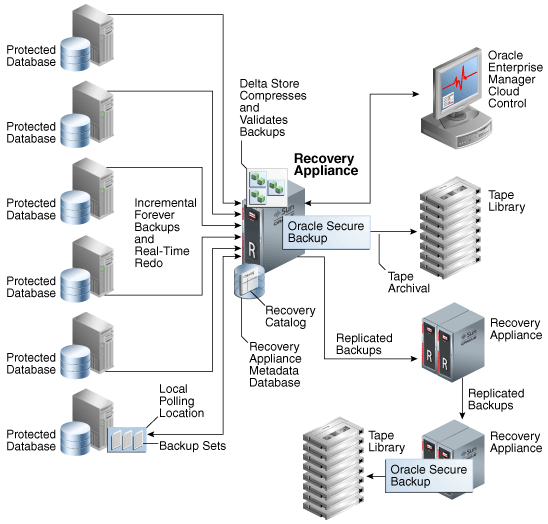During the early versions of Oracle, Larry Ellison was asked once if anyone ever asked for their money back. His answer was: “No, but they used to ask us for their DATA back.”
Backup and Recovery go hand-in-hand, right? It is just that before recovery, we need to restore the data under the solid assumption that there is something to restore.
From the 10 member family of Oracle Engineered Systems, the ZDLRA is in my opinion the most critical. Let me explain why including some useful information for system DBAs.
Granted we do not want to find solutions to problems we don’t have, let us look at what DBAs’ reality is today. Most problems listed below are not longer just DBA’s weekly burdens, they affect global business directly:
1. Data growth and long backup windows: system is slow and virtually unusable because of a long running backup, what are the options now: offload backups to an ADG site, use BCV splits, do not take backups at all?
2. Infinite availability: looks like people do not talk any more of four 9s or five 9s, more and more often I hear words like zero down time, infinite availability, continuous availability. An ex-colleague and friend of mine used to say: “Zero downtime exists only in power point presentations”.
3. Lack of backup validation and end-to-end visibility: according to the Oracle documentation, the main purpose of RMAN validation is to check for corrupt blocks and missing files. You can also use RMAN to determine whether backups can be restored. How often do we do that? Really!
4. Data loss and data corruption: one can write a book on this subject. I still sadly witness databases being backed up using storage replication. That is indeed a very fast way to backup corrupted data blocks!
Recovery Appliance provides the following benefits:
1. Elimination of Data Loss
2. Minimal Backup Overhead
3. Improved End-to-End Data Protection Visibility
4. Cloud-Scale Protection
Here is a sample picture of the Recovery Appliance Architecture (it is worth reading the details behind the link):
Core DBAs might be interested in the new DBMS_RA package. A DBA can use the DBMS_RA subprograms to perform all Recovery Appliance administration functions. Check the DBMS_RA Package Reference.
There 27 new views related to the ZDLRA. Check the Recovery Appliance View Reference for more details.
The database account RASYS owns the Recovery Appliance schema, which includes the RMAN recovery catalog and the DBMS_RA PL/SQL package. The RASYS user name is fixed and cannot be changed. RASYS does not have the privileges required to create database user accounts.
DBAs should know that the Zero Data Loss Recovery Appliance Backup Module is an Oracle-supplied SBT library that RMAN uses to transfer backup data over the network to the Recovery Appliance. An SBT library transfers data to and from a backup device type, either a tape device or Recovery Appliance. RMAN performs all backups to the Recovery Appliance, and all restores of complete backup sets, by means of this module.
The Recovery Appliance Backup Module must be installed in the following two locations: (1) in the ORACLE_HOME of every protected database that sends backups to a Recovery Appliance for Recovery Appliance replication environments, and (2) on every upstream Recovery Appliance that sends backups to downstream Recovery Appliances.
Another important new concept for DBAs is the protection policy one: it is a named collection of properties that you can assign to multiple protected databases. A default installation of Recovery Appliance has these 4 protection policies.
Finally, an important questions: which databases are supported? The following Oracle Database releases are:
-
– Oracle Database releases 10.2 through 11.2.0.3 require manual HTTPS configuration.
– Oracle Database releases 11.2.0.4 and 12.x are fully supported.
Four good links to start from:
1. Zero Data Loss Recovery Appliance Administrator’s Guide Release 12.1
2. Reinventing Database Protection
3. Data Sheet – Oracle Zero Data Loss Recovery Appliance
4. A Technical Guide to Oracle’s Recovery Appliance



